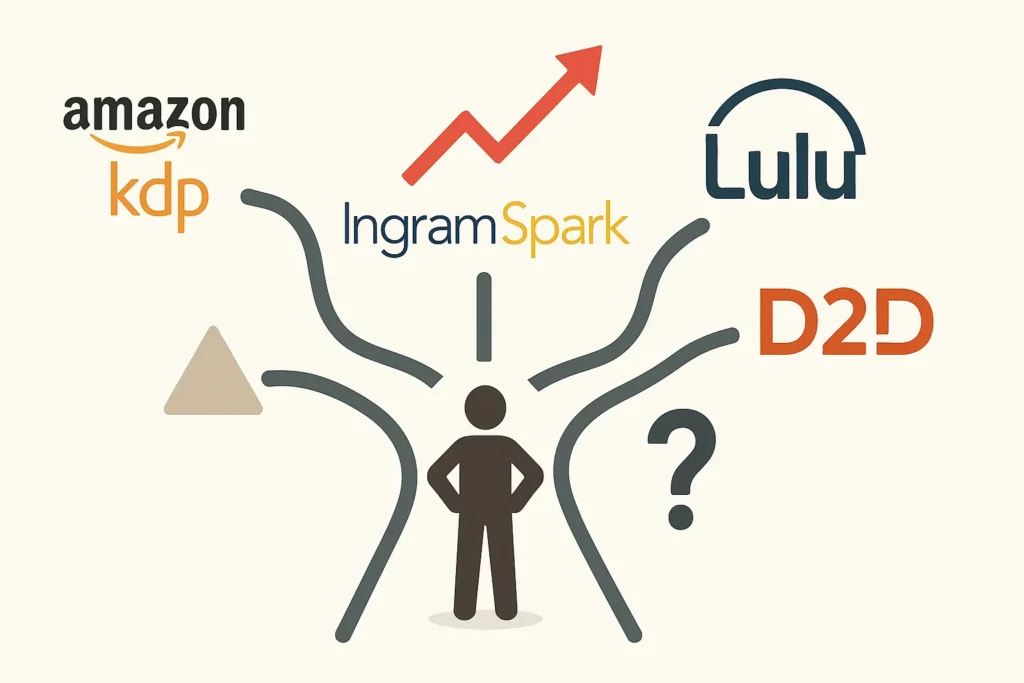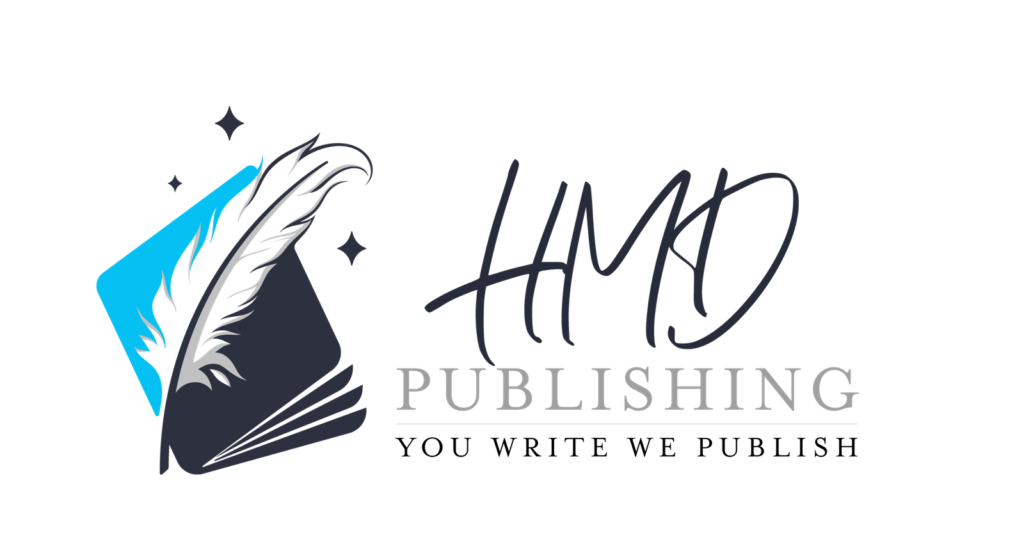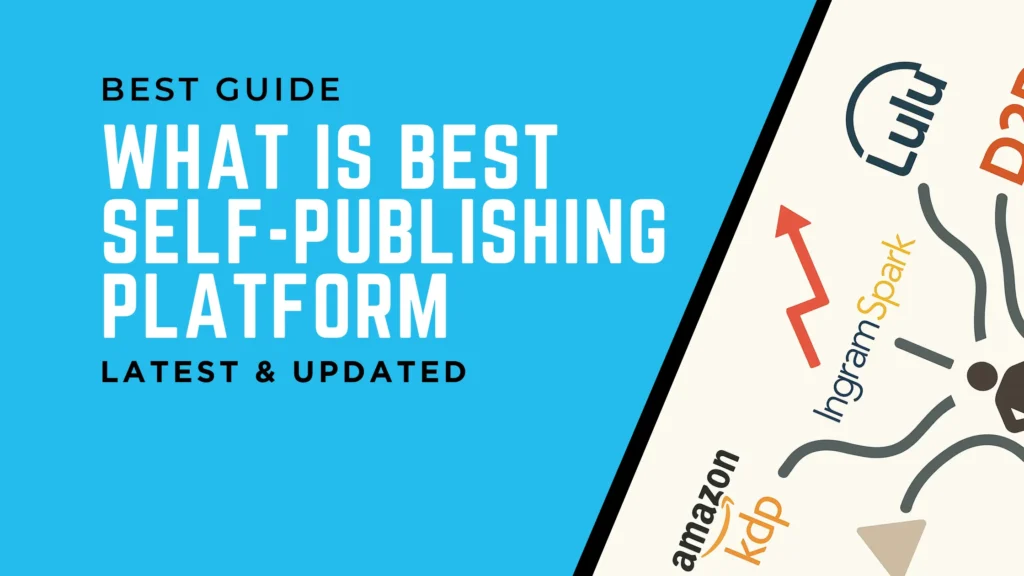You know all about self-publishing, but the information seems overwhelming. Relatable, right? There are too many places and the self-publishing process offers too much control to offer. But this control comes with the responsibility for the success or failure of the publishing process. Therefore, it is important to know how to choose the best platform for this crucial process in your writing journey. This is your comprehensive guide to learn how to navigate the complex landscape of self-publishing platforms, understand costs and royalty structures and make informed decisions about where and how to publish your work. Let’s read it below!
What are Best Self-Publishing Platforms?
The self-publishing system offers several platforms, each with different advantages and target audiences. Understanding these differences is crucial for making strategic publishing decisions.
HMD Publishing is an emerging name in the field of Self-Publishing. With over 10 years of experience and many successful projects, HMD promises the authors ease, convenience and professionalism in one place. Our expert team provides end-to-end publishing solutions, making the process easy, efficient, and stress-free. HMD offers all services from Book writing, editing and proofreading to book marketing and more. At all steps, HMD will assist the author with professional expertise.
Amazon Kindle Direct Publishing (KDP) remains the dominant force in the self-publishing ecosystem. KDP provides access to Amazon’s massive customer base of over 200 million monthly visitors, which makes it the go-to platform for many authors. The platform supports both eBooks and print books through its print-on-demand service, offering distribution across Amazon’s international marketplaces worldwide.
IngramSpark stands as the professional’s choice for self-publishing, especially for print books. This platform offers superior print quality and extensive distribution networks, reaching over 45,000 retailers, libraries, and online stores across the globe. IngramSpark’s partnership with traditional book distribution channels means your books can appear in physical bookstores alongside traditionally published titles
The platform’s benefits include professional-grade printing, hardcover options, and broader wholesale distribution. However, IngramSpark comes with setup fees and a steeper learning curve, making it more suitable for authors serious about professional publishing.
Lulu on the other hand, provides a middle ground between KDP’s simplicity and IngramSpark’s professionalism of the platform. Lulu offers unique publishing options that other platforms don’t support, including photo books, notebooks with spiral binding, calendars, comic books, magazines, and yearbooks. The platform provides both eBook and print publishing services with competitive rates.
Draft2Digital (D2D) has emerged as a leading aggregator service, earning high ratings for its user-friendly approach and wide distribution network across the globe. D2D automatically distributes your eBooks to multiple retailers, including Apple Books, Barnes & Noble, Kobo, and many others to create potential in the market. The platform’s strength lies in its simplicity and comprehensive reporting, allowing authors to manage multiple retail relationships from a single dashboard at their convenience..
Other notable platforms include Barnes & Noble Press, which provides direct access to the B&N customer base, Kobo Writing Life for international markets, and specialized platforms like Smashwords for wide distribution

Complete Guide to Self-Publishing on Amazon KDP
Publishing on Amazon KDP involves several key steps that authors must navigate carefully to maximize their book’s potential in the market. These steps are:
Account Setup and Prerequisites
Before beginning the upload process, ensure you have completed your manuscript, designed your book cover, obtained an ISBN (if desired), written your book description, determined your pricing strategy, and selected suitable categories and certain keywords.
Manuscript Preparation and Upload
Your manuscript must be properly formatted according to KDP’s specifications and standards. For eBooks, KDP accepts various formats including DOC, DOCX, and EPUB. Print books require PDF files with specific margins and bleed requirements. KDP provides free formatting tools and templates to help authors prepare their files correctly and specifically.
Optimization for Discoverability
Success on KDP mainly depends on the proper optimization of your book’s metadata. This includes selecting relevant categories, using effective keywords, writing descriptions, and choosing competitive pricing. Many successful authors recommend studying best-performing books in your genre to understand effective optimization strategies.
Leveraging KDP’s Tools and Features
KDP offers various promotional tools, including Kindle Direct Publishing advertising, free book promotions (for KDP Select members), Kindle Countdown Deals, and participation in Kindle Unlimited. Understanding how to effectively use these tools can significantly impact your book’s success
Is Amazon KDP Free? Costs and Royalties Explained
Amazon KDP operates on a revenue-sharing model rather than only upfront fees, making it accessible to authors regardless of their financial situation at that time.
Publishing Costs
Publishing your eBook on Amazon KDP is completely free. There are no listing fees, subscription charges, or setup costs. Amazon even provides free ISBNs for eBooks, although these can only be used within the KDP ecosystem. For print books, KDP also provides free ISBNs, but if you want to use your own ISBN, you’ll need to purchase one separately for this purpose.
Royalty Structure for eBooks
KDP offers two royalty options for eBooks which are 35% and 70%. The 70% royalty rate applies to eBooks priced between $2.99 and $9.99, while books priced below $2.99 or above $9.99 receive 35% royalties. The 70% option also includes delivery fees based on file size, typically $0.15 per megabyte in all over the US.
Authors who choose KDP Select (Amazon’s exclusivity program) to gain access to additional revenue streams through Kindle Unlimited page reads and Kindle Owners’ Lending Library, which can supplement traditional sales royalties.
Print Book Royalties
Print book royalties are calculated as 60% of the list price minus printing costs. Printing costs depend on page count, ink type (black and white vs. color), and trim size. For black and white books, printing costs remain constant until 108 pages, while color books have a 42-page threshold before additional per-page costs start to apply.
Additional Revenue Opportunities
Beyond standard royalties, KDP offers several additional income streams. Kindle Unlimited provides page-read payments from a global fund shared among participating authors. Authors can also earn from international markets, with some regions offering enhanced royalty rates for KDP Select participants.
How and Where to Sell Ebooks when Self-Publishing
The eBook market continues to grow with time, along with global revenues projected to reach $32.19 billion by 2032. This expansion creates numerous opportunities for self-published authors to find their audience across multiple platforms present in the market.
Direct Sales Platforms
Beyond Amazon, several platforms offer direct eBook sales opportunities. Apple Books provides access to iOS users worldwide, offering 70% royalties for direct publishers. Barnes & Noble Press serves the Nook ecosystem with royalty rates of 60% for books priced above $0.99. Kobo Writing Life offers a strong international presence, particularly in Canada and Europe, with competitive royalty rates.
Aggregator Services
Aggregators simplify multi-platform publishing by distributing your eBook to various retailers from a single dashboard. Draft2Digital leads this space with its user-friendly interface and comprehensive distribution network. Smashwords provides access to multiple retailers and libraries while offering 85% royalties for direct sales.
Direct-to-Consumer Options
Many authors are exploring direct sales through their own websites using platforms like Shopify, WordPress with Easy Digital Downloads, or specialized services like Sellfy and Payhip. These approaches allow authors to retain 100% of profits minus payment processing fees.
Direct sales require more marketing effort but offer higher profit margins and direct customer relationships. Authors can implement email marketing, social media promotion, and content marketing to drive leads to their own platforms.
Subscription and Membership Models
However, some authors find success with subscription-based models or membership sites where readers pay monthly fees for access to exclusive content. This approach works particularly well for authors with established audiences and regular publishing schedules.

Selling on Multiple Platforms: Pros and Cons
The decision between exclusive and wide distribution represents one of the most critical strategic choices for self-published authors.
Advantages of Wide Distribution
Publishing across multiple platforms offers several benefits. Diversified revenue streams reduce dependence on any single retailer, providing financial stability if one platform changes policies or experiences issues. Broader audience reach allows authors to connect with readers who prefer different platforms or live in regions where Amazon isn’t dominant.
International market access becomes particularly valuable for authors whose work appeals to global audiences. Platforms like Kobo have strong presences in Canada and Europe, while other regional platforms serve specific countries or have specific language markets.
Risk mitigation represents another crucial advantage. If one platform changes its algorithms, and policies, or experiences technical issues, authors with wide distribution maintain revenue from other sources.
Enhanced SEO and discoverability result from having multiple listings across different platforms, potentially increasing organic traffic and improving search engine visibility and online presence.
Challenges of Wide Distribution
Managing multiple platforms ultimately requires more time and effort. Each platform has unique formatting requirements, pricing guidelines, and promotional schedules to follow. Authors must track performance across multiple dashboards and manage separate relationships with each retailer.
Limited promotional tools represent another significant drawback. Exclusive programs like KDP Select offer promotional opportunities unavailable to wide-distribution authors. These tools can be crucial for book launches and maintaining visibility in competitive markets.
Complexity in marketing and promotion increases substantially with wide distribution. Authors must develop platform-specific marketing strategies and may struggle to achieve critical mass on any single platform.
Advantages of Exclusive Distribution
Amazon’s KDP Select program offers compelling benefits for exclusive authors. Kindle Unlimited access provides additional revenue through page reads from millions of subscribers. Enhanced promotional tools, including Kindle Countdown Deals and Free Book Promotions can significantly boost visibility.
Simplified management allows authors to focus their efforts on mastering one platform rather than juggling multiple relationships. This concentrated approach often leads to a better understanding of platform algorithms and more effective optimization strategies.
Higher royalty rates in certain international markets provide additional incentives for KDP Select participation.
Making the Strategic Decision
The choice between exclusive and wide distribution depends on several factors. Genre considerations play a crucial role, with romance, mystery, sci-fi, and fantasy often performing well in Kindle Unlimited due to high reader consumption rates. International audience factors favour wide distribution, while US-focused authors might benefit more from Amazon exclusivity.
The author’s experience level influences this decision significantly. New authors might benefit from KDP Select’s promotional tools and simplified management, while experienced authors with established audiences might prefer the wide distribution diversification benefits.
Long-term career goals should guide this strategic choice. Authors building sustainable careers often eventually transition to wide distribution to reduce platform dependence, while those focused on quick results might prefer exclusive distribution’s immediate benefits.
Final Thoughts
The self-publishing landscape continues evolving rapidly, with new platforms, tools, and opportunities emerging regularly. Success requires understanding these options, making strategic decisions aligned with your goals, and remaining adaptable as the industry changes. Whether you choose an exclusive distribution for its promotional advantages or a wide distribution for its diversification benefits, the key lies in understanding your audience, optimizing your approach, and consistently delivering quality content that resonates with readers across whichever platforms you choose to embrace.




